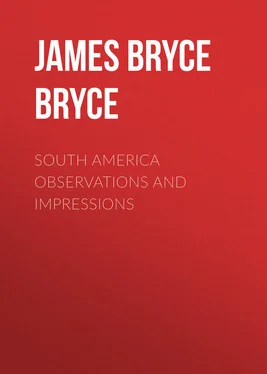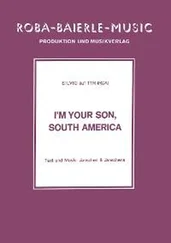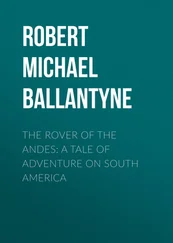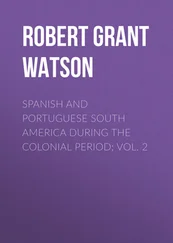James Bryce Bryce - South America Observations and Impressions
Здесь есть возможность читать онлайн «James Bryce Bryce - South America Observations and Impressions» — ознакомительный отрывок электронной книги совершенно бесплатно, а после прочтения отрывка купить полную версию. В некоторых случаях можно слушать аудио, скачать через торрент в формате fb2 и присутствует краткое содержание. Жанр: foreign_antique, foreign_prose, на английском языке. Описание произведения, (предисловие) а так же отзывы посетителей доступны на портале библиотеки ЛибКат.
- Название:South America Observations and Impressions
- Автор:
- Жанр:
- Год:неизвестен
- ISBN:нет данных
- Рейтинг книги:3 / 5. Голосов: 1
-
Избранное:Добавить в избранное
- Отзывы:
-
Ваша оценка:
- 60
- 1
- 2
- 3
- 4
- 5
South America Observations and Impressions: краткое содержание, описание и аннотация
Предлагаем к чтению аннотацию, описание, краткое содержание или предисловие (зависит от того, что написал сам автор книги «South America Observations and Impressions»). Если вы не нашли необходимую информацию о книге — напишите в комментариях, мы постараемся отыскать её.
South America Observations and Impressions — читать онлайн ознакомительный отрывок
Ниже представлен текст книги, разбитый по страницам. Система сохранения места последней прочитанной страницы, позволяет с удобством читать онлайн бесплатно книгу «South America Observations and Impressions», без необходимости каждый раз заново искать на чём Вы остановились. Поставьте закладку, и сможете в любой момент перейти на страницу, на которой закончили чтение.
Интервал:
Закладка:
But its cool and cloudy climate is only one of the singular features of the coast. From the Isthmus till one gets a little way south of the Equator at the Gulf of Guayaquil, the usual wet summer season of the tropics prevails and the abundant rains give to the highlands along the coast of Colombia and Ecuador splendid forests, which will one day be a source of wealth to those countries. But at this point, or to be more precise, about the boundary of Ecuador and Peru, near the town of Tumbez where Pizarro landed, the climatic conditions suddenly change, and there begins a rainless tract which extends down the coast as far as Coquimbo in 30° S. latitude. The vaporous moisture which the southeasterly trade winds bring up from the other side of the continent is most of it spent in showers falling on the eastern side of the Andes, and what remains is absorbed by the air of the dry plateaux between the parallel chains of that range, so that hardly any passes over to the western side of the mountains. The Antarctic current, cooling the air of the warmer regions it enters, creates plenty of mists but no rain, the land being warmer than the sea. Thus so much of the coast of western South America as lies between the ocean and the Cordillera of the Andes from Tumbez nearly to Valparaiso, for a distance of some two thousand miles, is dry and sterile. This strip of land varies in width from forty to sixty miles. It is crossed here and there by small rivers fed by the snows of the Andes behind, and along their banks are oases of verdure. Otherwise the whole coast of the strip is a bare, brown, and dismally barren desert.
We had hoped before reaching the arid region to touch at the city of Guayaquil, which is the chief port and only place of commercial importance in the mountain republic of Ecuador. It had, however, been put under quarantine by Peru, owing to the appearance in it of yellow fever and the Oriental plague, so we had to pass on without landing, as quarantine would have meant a loss of eight or ten days out of our limited time. Ecuador is not the most progressive of the South American countries, and Guayaquil enjoys the reputation of being the pest-house of the continent, rivalling for the prevalence and malignity of its malarial fevers such dens of disease as Fontesvilla on the Pungwe River in South Africa and the Guinea coast itself, and adding to these the more swift and deadly yellow fever, which has now been practically extirpated from every other part of South America except the banks of the Amazon. The city stands in a naturally unhealthy situation among swamps at the mouth of a river, but since Havana and Colon and Vera Cruz and Rio de Janeiro and even Santos, once the deadliest of the Brazilian ports, have all been purified and rendered safe, it seems to be high time that efforts should be made to improve conditions at a place whose development is so essential to the development of Ecuador itself.
Seeing far off the dim grey mountains around the Gulf of Guayaquil, but not the snowy cone of Chimborazo which towers behind them, we touched next morning at our first Peruvian port, the little town of Payta, and here got our first impression of those South American deserts with which we were to become so familiar. It is a row of huts constructed of the whitish sun-baked mud called adobe which is the usual building material in the flat country, with two or three shipping offices and stores and a railway station, for a railway runs hence up the country to the old town of Piura. A stream from the Andes gives fertility to the long Piura valley which produces much cotton of an extremely fine quality. There are also oil wells not far off, so Payta does some business, offering as good an anchorage as there is on this part of the coast. We landed and climbed to the top of the cliffs of soft strata that rise steeply from the water, getting a wide view over the bay and to the flat-topped hills that rise fifteen miles or more inland. The sun had come out, the air was clear and fresh, and though the land was as unmitigated a bit of desert as I had ever seen, with only a few stunted, prickly, and woody stemmed plants supporting a feeble life in the hollows of the ground, still it was exhilarating to tread at last the soil of a new continent and receive a new impression.
The first view of Peru answers very little to that impression of a wealthy land called up by the name of this country, more familiar and more famous in the olden days than that of any other part of the colonial empire of Spain. Nevertheless, it is a curious fact that the wealth of Spanish Peru belonged more to her barren than to her fertile and populous regions. In the days of the Incas it was otherwise. They ruled over an agricultural people, and though they had gold in plenty, gold to them was not wealth, but material for ornaments. Apart, however, from agriculture, of which I shall speak later, the riches of Peru have consisted of three natural products, which belong to the drier tracts. These are the guano of the rainless islands off the coast, the nitrate deposits in the province of Tarapaca and the mines of silver and copper. Of these three, the guano has now been nearly exhausted, and while it lasted it enriched, not the country, but a succession of military adventurers. The nitrate regions have been conquered by Chile and seem unlikely ever to be restored. The most productive of the silver mines were taken away when Bolivia, in which they are situated, was erected into a separate republic, and such mines as remain in the High Andes, doubtless of great and not yet fully explored value, are in the hands of foreign companies and syndicates. Little good have these bounties of nature done to the people of Peru, whether Spanish or Indian.
From Panama to Payta the direct steamers take five days, and from Payta to Callao it is two days more, so the whole voyage is about as long as that from New York to Liverpool in the quick liners. This is one of the least troubled parts of the ocean; that is to say, gales are rare, and hurricanes, like those of the Caribbean, unknown. There is, however, usually a pretty heavy swell, and when there has been a storm some two or three hundred miles out to the west, the great rollers come in and make landing along the coast no easy matter. As the ship keeps too far out for the details of the coast to be visible, the voyage is rather monotonous, especially in the cloudy weather we encountered. Here in the Antarctic current one has lost the pleasure of watching the gauzy gleam of the flying fish, but sea-birds appear circling round the ship and pelicans abound in the harbour. Whales, following the cold water northward, are seen spouting and are beset and attacked by their enemy the thresher, while whenever the ship anchors in a roadstead to discharge or take in cargo, seals and sea lions gambolling among the waves give a little amusement. The crew were Chileans, – they are the only South Americans with a taste for the sea – the passengers mostly natives of the various republics along the coast, for these steamers furnish the only means of communication north and south, but there are usually some English commercial men and North Americans looking after their mining interests or prospecting for railways across the Andes. There is much more variety than one usually finds in an Atlantic liner, but much less than in a Mediterranean or Black Sea steamer, where on the same deck you may see the costumes and hear the tongues of seven or eight nations. The Spanish-Americans are not very communicative to strangers, but whoever speaks their language can learn a good deal from them about minerals and revolutions, – the two chief products of the northwest coast.
To sail along a coast without a chance of examining its natural beauties or the cities that stud it, is in most cases mortifying, but here in the six hundred miles between Payta and Callao one has this consolation, that there is nothing to see, and you cannot see it. The shores are brown, bare and unpeopled, while the heavy cloud roof that hangs over the sea, hides the tops of the hills also, and cuts off all view of the snowy Cordillera far behind. The towns are few and small, because the land is sterile save where one of the Andean streams gives fertility to a valley. One would naturally suppose that the country had always been even as it is now. But the ruins of ancient cities here and there prove that it must once have been far more populous. A census taken soon after the Conquest shewed that there were in the Valley of Piura 193,000 Indians. In 1785 the inhabitants, then mostly negroes, numbered only 44,500. Of these ruins the largest are those of a city often called Chimu, from the title of the king who ruled there, near the town of Truxillo, to which Pizarro, when he founded it, gave the name of his own Estremaduran birthplace. The remains cover a wide space and shew that the people who dwelt here and in the other coast valleys must have made considerable advances toward civilization, for the pottery and other utensils are better in artistic style than any other remains found in South America. The kingdom of the Chimu was overthrown by the Incas a century before the Spanish Conquest, and nothing is known of the race except that its language, called Mochica, was quite different from that of the mountain tribes who obeyed the Incas. Whether the people perished under Spanish oppression, or whether they moved away, when in the confusion that followed the Conquest, the irrigation works that made cultivation possible were allowed to fall into decay – this is one of the many riddles of Peruvian history.
Читать дальшеИнтервал:
Закладка:
Похожие книги на «South America Observations and Impressions»
Представляем Вашему вниманию похожие книги на «South America Observations and Impressions» списком для выбора. Мы отобрали схожую по названию и смыслу литературу в надежде предоставить читателям больше вариантов отыскать новые, интересные, ещё непрочитанные произведения.
Обсуждение, отзывы о книге «South America Observations and Impressions» и просто собственные мнения читателей. Оставьте ваши комментарии, напишите, что Вы думаете о произведении, его смысле или главных героях. Укажите что конкретно понравилось, а что нет, и почему Вы так считаете.












